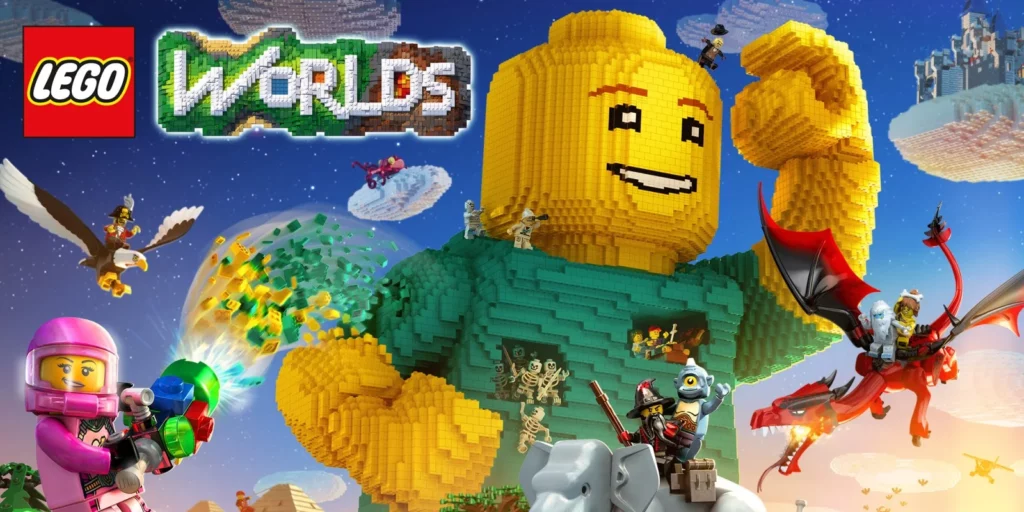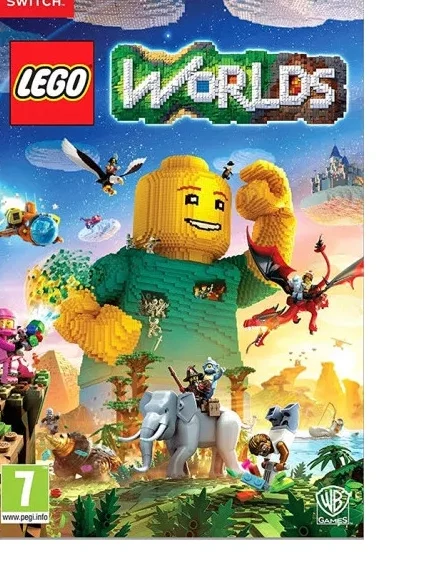LEGO Worlds on Nintendo Switch – A Building Adventure with a Few Missing Bricks

LEGO Worlds, an ambitious sandbox game released on the Nintendo Switch, promised a new dimension to the LEGO gaming experience. Positioned as a LEGO game focused on creation rather than action, it sparked excitement in the gaming community. However, as the bricks began to fall into place, it became evident that the game’s execution left something to be desired.
Gameplay and Exploration
Similar to its LEGO game predecessors, LEGO Worlds offers a mix of exploration and quests. The introduction of procedurally generated worlds brings an element of unpredictability, offering diverse landscapes from candy-coated wonderlands to Mordor-like terrains. Despite the game’s surface-level gameplay, exploration remains compelling due to its randomness and the side activity of discovering items in the environment.
The Story Mode
The game’s story mode, functioning as an extensive tutorial, introduces players to an astronaut navigating between worlds. As players progress, they acquire various tools for terraforming and shaping the environment. While the gradual introduction of tools ensures understanding, the story mode’s quests reveal its first cracks. Repetitive and simplistic fetch quests dominate, lacking the depth seen in conventional LEGO games. The abilities granted to the player often trivialize challenges, leading to a sense of disconnection between quests and the game’s overall design.

LEGO Worlds – Nintendo Switch Adventure Game
LEGO Worlds” for Nintendo Switch offers an enchanting adventure where players explore vibrant worlds filled with quirky creatures and vehicles. Become a Master Builder, aid LEGO® characters in various quests, and unleash your creativity by building and modifying environments. With the added thrill of online multiplayer, this game promises endless cooperative and competitive fun.
Challenges and Quest Communication
LEGO Worlds struggles with quest design and communication. Quests frequently lack complexity, and the game fails to communicate crucial parameters, causing frustration and bottlenecks in progression. The disconnect between the required items and their availability can lead to confusion, requiring players to figure out quest intricacies independently.
Sandbox Mode
The game’s strength shines through in its sandbox mode, offering players total creative control. With an extensive array of LEGO pieces available from the start, players can build anything their imagination desires. The depth of the toolbox is impressive, allowing for the recreation of real-life structures. However, the mode’s appeal depends on the player’s creative inclinations, and it may not cater to those uninterested in constructing their virtual worlds.
Performance and Online Play
LEGO Worlds falls short in showcasing the Nintendo Switch’s capabilities. The draw distance occasionally harkens back to older console generations, and while the framerate remains close to 30 FPS, it fluctuates during busy scenes. The inclusion of a second player exacerbates performance issues, and the online mode, while a welcome addition, limits interactions to Switch profile friends. The game’s numerous bugs, including crashes and clipping problems, further mar the overall experience.
Conclusion
LEGO Worlds presents a plethora of promising ideas but stumbles in execution. While creative players may find enjoyment in the sandbox mode, the overall experience feels underdeveloped. The game’s core concept holds potential, leaving room for improvement in future updates or sequels. As it stands, LEGO Worlds on the Nintendo Switch may not live up to the expectations set by its ambitious premise, making it advisable for prospective players to exercise caution before delving into this blocky adventure.
- Transform Your Kitchen with Premium Appliances – A Complete Guide to Luxury Kitchen Solutions
- Essential Tips for Maintaining Your Hiking Gear
- Must-Have Gadgets for the Modern Kitchen
- The Ultimate Guide to Home Automation – Smart Devices for Every Room
- How to Choose the Best Portable Charger for Your Devices
